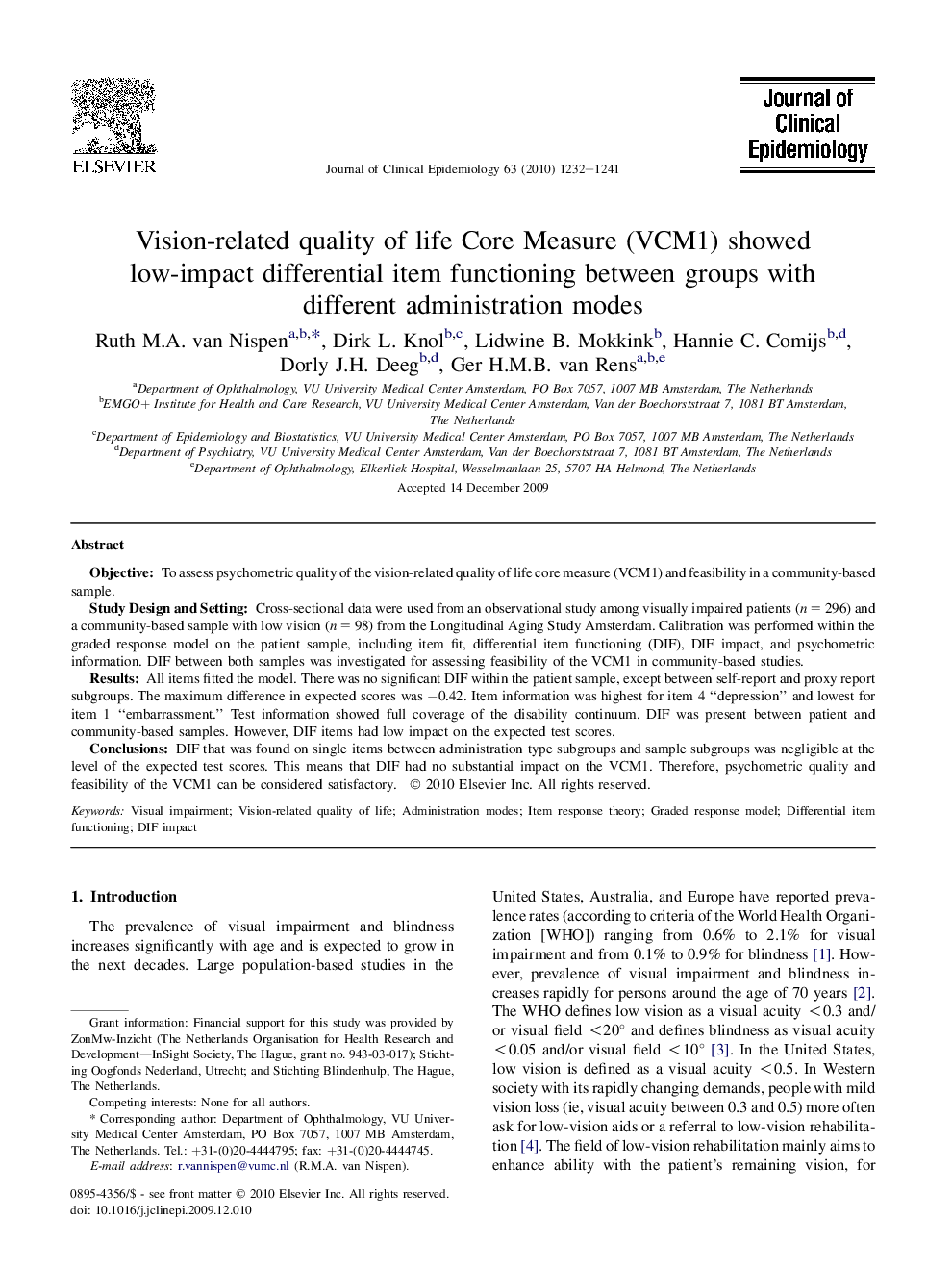| کد مقاله | کد نشریه | سال انتشار | مقاله انگلیسی | نسخه تمام متن |
|---|---|---|---|---|
| 1082515 | 950949 | 2010 | 10 صفحه PDF | دانلود رایگان |

ObjectiveTo assess psychometric quality of the vision-related quality of life core measure (VCM1) and feasibility in a community-based sample.Study Design and SettingCross-sectional data were used from an observational study among visually impaired patients (n = 296) and a community-based sample with low vision (n = 98) from the Longitudinal Aging Study Amsterdam. Calibration was performed within the graded response model on the patient sample, including item fit, differential item functioning (DIF), DIF impact, and psychometric information. DIF between both samples was investigated for assessing feasibility of the VCM1 in community-based studies.ResultsAll items fitted the model. There was no significant DIF within the patient sample, except between self-report and proxy report subgroups. The maximum difference in expected scores was −0.42. Item information was highest for item 4 “depression” and lowest for item 1 “embarrassment.” Test information showed full coverage of the disability continuum. DIF was present between patient and community-based samples. However, DIF items had low impact on the expected test scores.ConclusionsDIF that was found on single items between administration type subgroups and sample subgroups was negligible at the level of the expected test scores. This means that DIF had no substantial impact on the VCM1. Therefore, psychometric quality and feasibility of the VCM1 can be considered satisfactory.
Journal: Journal of Clinical Epidemiology - Volume 63, Issue 11, November 2010, Pages 1232–1241